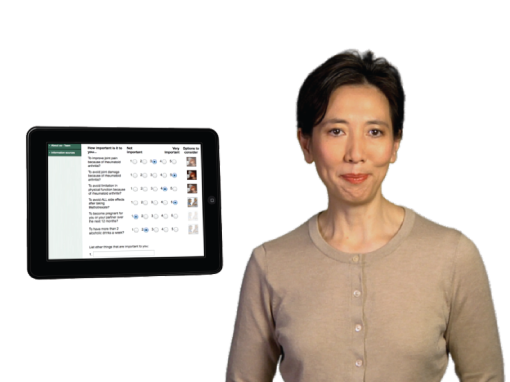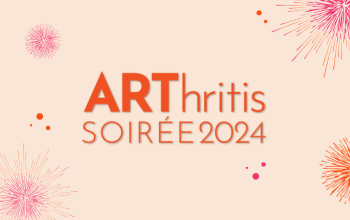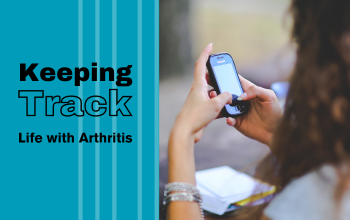The Arthritis Newsletter
Spring 2016An Interview with Dr. Linda Li - Featured Researcher
By Sheila Kerr
Congratulations to Dr. Linda Li on receiving the Arthritis Research Health Professionals Distinguished Scholar Award. This is the highest award given by this international association and recognizes Dr. Li as one of the world’s leading scientists in arthritis research. The award highlights her key contributions to understanding help-seeking behaviour in people with arthritis as well as her pioneering work in using digital media interventions to improve the management of arthritis.
What inspired you to start including patients as partners in your research? When and how did that unfold?
I first worked with patients in research when I was a trainee in the Canadian Arthritis Network (CAN) around the time when CAN was established. With the patient influence of Cheryl Koehn and many others, CAN advocated for an important role for patients in their research projects, which was very new at the time. As a trainee, people took me under their wings and taught me how to work with patients in a meaningful manner. They showed me how to include individuals at different stages of my projects. The Network was really instrumental for many of us to develop the skills and attitudes needed to work with patients as equal partners in research. The network also mentored a generation of patients to have the confidence to act as equal partners. When I started my faculty position at UBC and at Arthritis Research Canada (ARC) the patient involvement was unprecedented. The Arthritis Patient Advisory Board (APAB) was at ARC, so I didn’t need to go very far to engage individuals in research projects.
Can you tell us how you became interested in help-seeking behaviour in people with arthritis?
I started my research in help-seeking with Dr. Catherine Backman and Dr. Anne Townsend. When people first get diagnosed with rheumatoid arthritis, it’s usually a confusing and stressful time. We did a series of studies and interviews to understand what they went through, and the context in which they made decisions about their treatment. We found that patients wanted to be healthy and wanted to ‘self-manage well’. Patients also knew in order to achieve this, there were certain medications they needed to take, they needed to be active, to eat well, etc.
On the other hand, patients identified challenges in balancing the potential side effects of medications and how some of the treatments interfered with their lives. We looked at different ways to develop interventions that fit into people’s lifestyles, allowing them more control as ‘self-managers’ in their disease. This led us to develop and test online and mobile tools to support patients in managing their health.
What roles have patients played in your research and how has this evolved over time?
In the early days I had the opportunity to talk to individuals, flesh out ideas about research questions, discuss ways to design a project, and to get a letter of support. That was deemed meaningful engagement. I have learned from my patient partners over the years, many from APAB, and now I consider meaningful engagement of patients as a part of doing ‘good research’. Patients bring their lived experiences with the disease to the research process. They are the ones who understand the disease the best, and so their input adds depth and relevance to the research. The reciprocal relationship with patient partners is important, and I actively look for opportunities to support patients partnering in research. Our partnership with APAB nowadays includes spending time to discuss ideas, which sometimes turn into amazing opportunities for mentoring trainees and providing them with their first experience in collaborating with patients.
Our ‘About Us’ project is an exciting example of this. I am proud to see how the new trainees conduct themselves, collaborating with APAB members and really trying to get everything done in a respectful collegial manner. I have no knowledge of other studies I’m working on right now, including some of my own, achieving this level of collaboration and mutual benefit between patient and researcher.
Have patients or non-researchers ever given you a novel research idea that stimulated you to apply for funding?
The most recent example of this came when the ARC research team IMPAKT HiP project was assessing the hip health in Indigenous people in Campbell River, BC. When the project was completed I went back to ask the Community Health Centre staff if we could help answer a research question that was important to their community. I had my Fitbit with me at the meeting and began to talk about another Fitbit project I was doing and asked them to tell me what they thought. Within 5 minutes, I had everyone on board and they were suggesting ideas which subsequently became a project. We developed a physical activity mentoring model where we invited community members who were physically active to act as mentors for people who were not as active. We gave them a Fitbit and we showed them how to use the online profile to monitor their activities. The mentors met with them once every 2 weeks to set goals and encourage them to be active.
We are now doing our one-year anniversary assessment of the 60 people participating in the study. We also did follow up interviews with some of the participants to hear their stories. It was really a wonderful experience. This study would not have started, if it wasn’t an idea coming from the community. The community thought physical activity was an issue they would like to address with the help of researchers to determine whether it works or not.
Do you think involving patients has made your research more powerful, improved the application of your results?
I think it has certainly improved the uptake of research as there is buy in from the very beginning. Having something developed by patients and used by patients is probably the most powerful testament to the credibility of the tool or intervention. It is a huge advantage. I also think it helps me to be a better researcher because patients ask the hardest questions. Reviewers ask hard questions, but patients will ask those hard questions up front. It makes me and other researchers think harder, to make sure what we are doing is actually contributing to a benefit, rather than just a study that propels someone’s career.
How do you measure the impact of patient involvement in research?
I’m working with a new post-doctoral fellow, Dr. Clayon Hamilton and with patients engaged in research to develop a tool to measure the different ways of engaging people in research. I think it will be a starting point to move the quality, the science and even the imagination to better develop these interventions. We need to determine if they work or not. Until you have a valid measurement tool, you won’t know.
Thank you Linda for being a champion of patient engagement in research and for developing interventions that understand and include the patient perspective.


























































